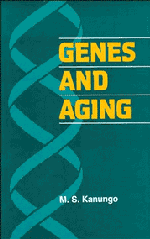1 - Introduction
Published online by Cambridge University Press: 22 March 2010
Summary
Aging as a phenomenon in the life spans of organisms has intrigued mankind from time immemorial. Why and how is it that having attained a vigorous adulthood, all functions should undergo decay? The duration of this phase, which is referred to as aging or senescence, varies with species. It can be as short as a few days as in the female octopus which lays eggs only once, broods them, reduces its food intake, and dies soon after her young hatch. Among the so-called marsupial mice of Australia, the males live for only about a year. When they approach the end of their lives, they stop eating and engage in a competitive, brief but frantic mating. All males die shortly thereafter, perhaps due to hormonally induced stress. The females live long enough to suckle their young and wean them. Very few females live long enough to breed again. The female Pacific salmon also lays eggs once, and then dies soon after. These are sort of “sudden death” phenomena that occur soon after one-time reproduction, and the period of aging is too brief to be perceptible in these organisms.
In most species, however, such a phenomenon is not seen even when a large number of eggs or young are produced. Mice and rats give birth to a large number of young, take care of them during their weaning period, and are ready to breed again soon after. In higher mammals such as humans and elephants, only a few young are produced during the entire life span with long gaps, sufficient to take care of the young during the crucial early developmental period.
- Type
- Chapter
- Information
- Genes and Aging , pp. 1 - 20Publisher: Cambridge University PressPrint publication year: 1994



